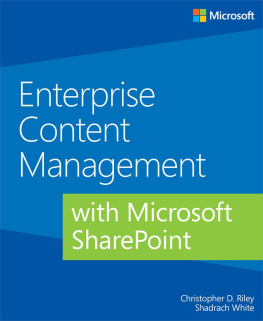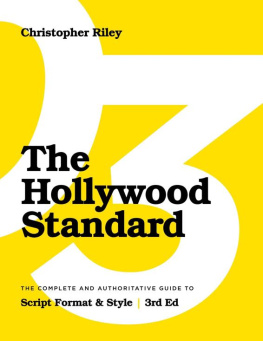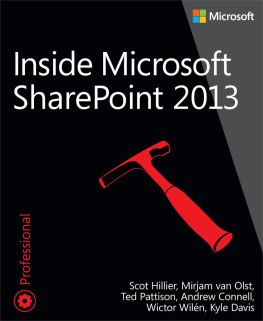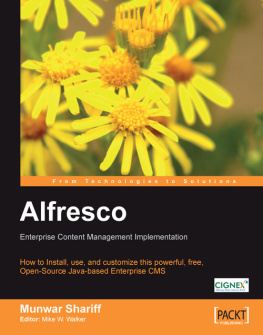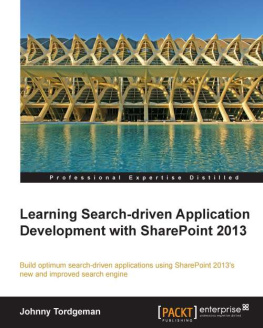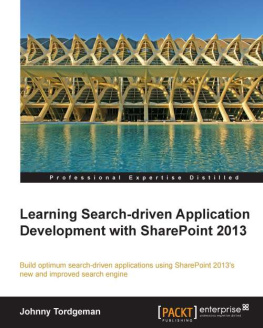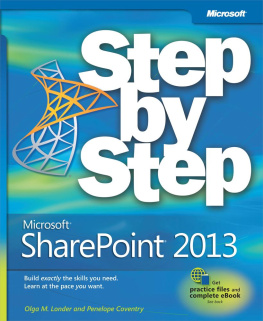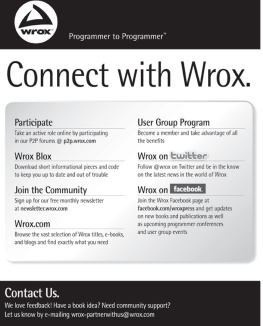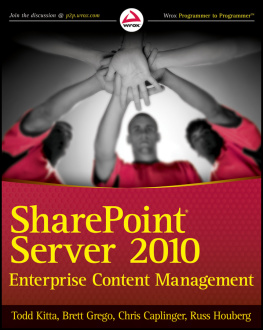Enterprise Content Management with Microsoft SharePoint
Christopher D. Riley
Shadrach White
Published by Microsoft Press
Special Upgrade Offer
If you purchased this ebook directly from oreilly.com, you have the following benefits:
DRM-free ebooksuse your ebooks across devices without restrictions or limitations
Multiple formatsuse on your laptop, tablet, or phone
Lifetime access, with free updates
Dropbox syncingyour files, anywhere
If you purchased this ebook from another retailer, you can upgrade your ebook to take advantage of all these benefits for just $4.99. to access your ebook upgrade.
Please note that upgrade offers are not available from sample content.
Introduction
In this book, you will learn why Enterprise Content Management (ECM) is important and how it can be implemented utilizing the SharePoint platform. When you have completed reading the book, you will have the comfort level to know how to implement ECM inside of SharePoint and to understand why you are doing it. This will also help you bridge the gaps in communication between technology and business needs that exist in most organizations.
As you read the book, you will find that there is more emphasis placed on ECM principles than there is on SharePoint 2013. This is intentional, because as you will soon learn, trying to achieve ECM by simply turning on and configuring SharePoint features is completely the wrong approach. Until you fully understand ECM, you dont stand a chance of making SharePoints features useful to deploy an ECM solution.
Our research, and more importantly, our practical experience have shown that the difference between successful ECM projects and disasters always points to a people or planning problem. Very often, business users are demanding an ECM solution and expect IT departments to implement it. Without a clear understanding of why they are implementing an ECM solution, IT takes the approach of setting up a SharePoint farm, enabling most, if not all, available features, and leaving the rest to the user. Or, its taken one step further, and they attempt to configure content management functionality such as versioning and managed metadata, without the guidance from the knowledge workers. This is the definition of knowing enough to be dangerous.
This results in a SharePoint farm configured, standard features enabled, and users given access. Left to their own devices, users will often blame IT for not seeing what they are looking for, and IT will be stuck without a clue about where to make changes.
Lets hope that at this point the organization gets a clue and does a reset on the project. If not, one of two things can happen: first, the users will not use the system and default to what they did before, and in a year the deployment will be chalked up to failure; or second, the system does get adopted but in a rapid way that mirrors all the mistakes that occur from the use of shared network drives. This is called SharePoint sprawl and results in site proliferation and/or the webification of already poorly managed shared drives.
The catalyst for these problems is a language gap between IT and business users. When an outside ECM consultant asks you to do an inventory of how knowledge workers operate within your organization, it seems like a mundane and overtly simple question.
However, interestingly enough, when you approach a knowledge worker, requesting a complete description of how they do their job, often the results are a trickle of ideas about the particular tasks a knowledge worker completes in a day, but not really how they are executed. When tasks become routine, their details disappear. This vanishing act results in oversimplification on the part of the knowledge workers of what it takes to manage these tasks. The result is that the IT team has no clearer picture of how content is consumed in the organization than the knowledge workers do, yet everyones expectations for automation are extremely high.
It is comforting to know that there are very few aspects of ECM that cant be automated, streamlined, and improved with SharePoint 2013. But until an organization knows how the technology fits into their specific modes of operation, its impossible to go from zero to a successful SharePoint ECM solution.
We are suggesting that planning is the key ingredient to get right early on in ECM projects. But planning usually fails. This is most often because organizations are too nearsighted to do it, because the wrong people are asked to implement ECM, and because the communication between the users and implementers is poor.
Who this book is for
Whether you are a business analyst, IT manager, decision maker, or knowledge worker, by the end of this book you will all be on the same page, speaking the same language, and able to push forward with a proper ECM project. To that end, this book will be part technical and part philosophical. The methodologies of ECM will be followed up with technical examples of how this is accomplished in ECM. This mapping is the exact link that is too often missing in most projects. IT gets the technical SharePoint pieces, and knowledge workers, whether they can state it or not, know the methods of working with the content that SharePoint will be processing and managing.
In addition, we have included a CloudShare demo environment that contains the Information Architecture (IA) discussed extensively in this book.
If you are a business user, you might be tempted to skip the technical bits; please dont. The cursory knowledge of the SharePoint terms and implementation will help you communicate clearly, understand the reasons why SharePoint is being implemented a specific way, and ultimately enable you to get what you want out of the ECM solution.
If you are technical, you might be tempted to skip ahead to the technical pieces and address only those topics that relate to your current project. If so, this is a red flag that your ECM project has already failed and that you are not looking at the solution holistically.
The use cases and labs are meant to help get you started and are in no way designed as a step-by-step guide for building a complete solution. We highly recommend that you read the early chapters first so that you can understand the concepts and best practices for designing and building an ECM solution. Otherwise, you will likely put the technical aspects of SharePoint ahead of the operational business and people aspects of a successful ECM Project.
Ideally, every ECM project stakeholder in your organization will read this book. The project sponsor, power users, IT manager, business analyst, legal counsel, and records management teams will find this as glue to guide the successful execution of the project.
Assumptions about you
The basic assumption of this book is that your organizations needs content management and that you are a stakeholder in getting a content management system deployed. The second primary assumption is that you already own, or will soon own, SharePoint and that your goal is to use SharePoint as the platform for building the required ECM solution.
There are several versions of SharePoint. While most of what is discussed in this book will be relevant for all versions of SharePoint 2010 and SharePoint 2013, both on-premises and in Office 365, the specifics will focus on SharePoint 2013 on-premises standard version or higher. The methodology and process will be relevant whichever version of SharePoint you use. However, if you have SharePoint foundation versions, you will not be able to implement many of the functions required.

